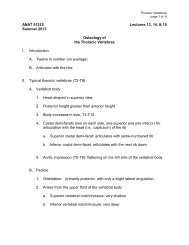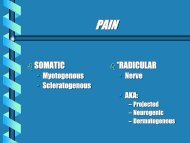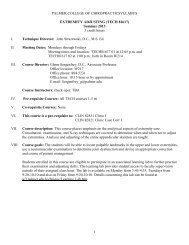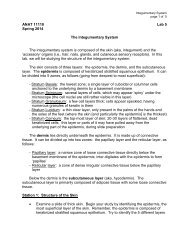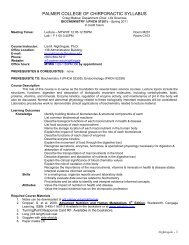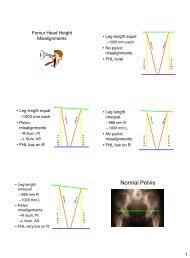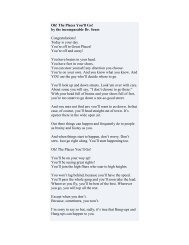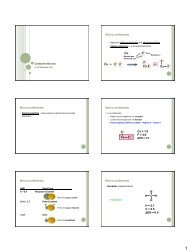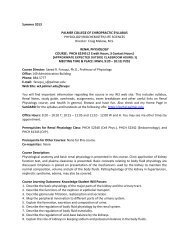POISE-SkyLite User Guide - Palmer College of Chiropractic, Intranet ...
POISE-SkyLite User Guide - Palmer College of Chiropractic, Intranet ...
POISE-SkyLite User Guide - Palmer College of Chiropractic, Intranet ...
Create successful ePaper yourself
Turn your PDF publications into a flip-book with our unique Google optimized e-Paper software.
USING SKYLITE CHAPTER 2<br />
See page 54.<br />
OLE Support in <strong>SkyLite</strong><br />
OLE automation (Object Linking and Embedding) allows you to export a programming<br />
interface from an application for use by another application. This allows one application<br />
to drive another. For example, most <strong>of</strong> Excel’s macro language is available to other<br />
applications via OLE automation. You can insert OLE objects into a <strong>SkyLite</strong> session.<br />
Because <strong>SkyLite</strong> is an automation enabled object, you can open <strong>SkyLite</strong> sessions and<br />
make use <strong>of</strong> the macro language from within applications that are OLE Automation<br />
Controllers, such as Visual Basic for Applications (VBA), the Excel Macro Language,<br />
Visual C++, and Delphi.<br />
Inserting an OLE object<br />
To insert an OLE object:<br />
1. Select Insert new object from the Edit menu.<br />
2. Select the Object type from the list.<br />
Create New<br />
If you select Create New, you will get a list <strong>of</strong> objects that you can insert into your<br />
document. For example, if you selected Bitmap Image, an object would be inserted<br />
into your document that would allow you to create a bitmap image.<br />
Display as icon<br />
Enabling the Display As Icon inserts a shortcut into the document that represents the<br />
file.<br />
Create from File<br />
If you select Create from File, this will insert the contents <strong>of</strong> an existing file into the<br />
document, and you will be able to edit it using the program that created it. Type the<br />
file name that you want to select, or use the Browse button.<br />
Link<br />
Enabling the Link button inserts a picture <strong>of</strong> the file contents into the document. The<br />
picture will be linked to the file so that changes to the file will be reflected in your<br />
document.<br />
Note: You cannot save or print an embedded object in a session.<br />
Deleting an OLE object<br />
You can delete a selected OLE object:<br />
1. Select the object you want to delete.<br />
2. Select Delete object from the Edit menu.<br />
Deleting all OLE objects<br />
You can delete all OLE objects in a session:<br />
Select Delete all objects from the Edit menu.<br />
See page 52.<br />
Using the Command Stack<br />
The Command Stacker option stores the last 20 commands entered per session while<br />
using <strong>SkyLite</strong>, if set.<br />
By default, the Command stacker is turned <strong>of</strong>f. To enable the Command Stacker, see<br />
Configuring Editing, page 22.<br />
Warning:<br />
If you use the Command Stacker, it may also store any user IDs and passwords typed<br />
during connection to a host. To prevent this, you can write a special login macro that will<br />
20 <strong>POISE</strong>-<strong>SkyLite</strong> <strong>User</strong> <strong>Guide</strong>



